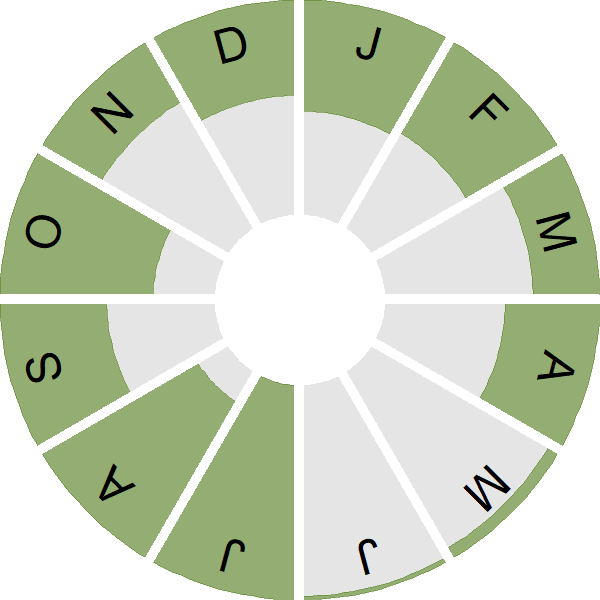Two-barred Crossbill
Introduction
Similar in appearance to Common Crossbill but with broad white wingbars and a distinctive call, this is a scarce, but irregular immigrant to Britain & Ireland from north-eastern Europe.
Annual numbers are highly variable, and there can be years where we see significant influxes.
Key Stats
Status and Trends
Conservation Status
Population Size
Population Change
Population trends of this scarce species are not routinely monitored.
Distribution
Greenfinches are widely distributed in winter and the breeding season, perhaps showing especially strong associations with villages and towns across Britain & Ireland. Like the Goldfinch, the only significant range gaps for this species are in the higher parts of northern Scotland. Highest densities are found on lower ground, mainly in south and southeast England, eastern Scotland and in pockets throughout Ireland.
Occupied 10-km squares in UK
or view it on Bird Atlas Mapstore.
or view it on Bird Atlas Mapstore.
European Distribution Map
Distribution Change
There have been small range expansions in winter and the breeding season. Population reductions due to trichomonosis had not led to range contractions bu 2007–11.
Seasonality
This species has been too rarely reported to BirdTrack during 2011–22 to properly assess seasonality.
Movement
Britain & Ireland movement
Foreign locations of birds ringed or recovered in Britain & Ireland
Dots show the foreign destinations of birds ringed in Britain & Ireland, and the origins of birds ringed overseas that were subsequently recaptured, resighted or found dead in Britain & Ireland. Dot colours indicate the time of year that the species was present at the location.
- Winter (Nov-Feb)
- Spring (Mar-Apr)
- Summer (May-Jul)
- Autumn (Aug-Oct)

Biology
Survival and Longevity
Survival is shown as the proportion of birds surviving from one year to the next and is derived from bird ringing data. It can also be used to estimate how long birds typically live.
View number ringed each year in the Online Ringing Report.
Classification, names and codes
Classification and Codes
- Order: Passeriformes
- Family: Fringillidae
- Scientific name: Loxia leucoptera
- Authority: JF Gmelin, 1789
- BTO 2-letter code: PD
- BTO 5-letter code: TWBCR
- Euring code number: 16650
Alternate species names
- Catalan: trencapinyes d'ala blanca
- Czech: krivka belokrídlá
- Danish: Hvidvinget Korsnæb
- Dutch: Witbandkruisbek
- Estonian: vööt-käbilind
- Finnish: kirjosiipikäpylintu
- French: Bec-croisé bifascié
- German: Bindenkreuzschnabel
- Hungarian: szalagos keresztcsoru
- Icelandic: Víxlnefur
- Irish: Crosghob Báneiteach
- Italian: Crociere fasciato
- Latvian: balstsvitru krustknabis
- Lithuanian: margasparnis kryžiasnapis
- Norwegian: Båndkorsnebb
- Polish: krzyzodziób modrzewiowy
- Portuguese: cruza-bico-listado
- Slovak: krivonos bielokrídly
- Slovenian: beloperuti krivokljun
- Spanish: Piquituerto aliblanco
- Swedish: bändelkorsnäbb
- Welsh: Gylfingroes Adeinwyn

